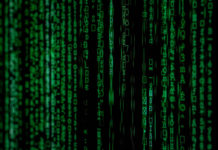Ericsson first to give Smartphone users indoor boost with License Assisted Access
http://www.thailand4.com/.comm/2015-02-12/1506fbab8ee85649e335312713cfd1ce/
Telecommunication Press Releases Thursday February 12, 2015 14:02
Bangkok–12 Feb–Ericsson
We spend more than 85 percent of our time indoors, but a recent Ericsson ConsumerLab study conducted with more than 47,000 respondents across 23 countries, reveals that only 41 percent are highly satisfied with their indoor experience when browsing or accessing social networks. This drops to 36 percent for more data-heavy apps: watching video, TV or movies online. Addressing this app coverage challenge, Ericsson is first to give smartphone users the benefit of concurrent access to both licensed and unlicensed spectrum, by delivering the first License Assisted Access (LAA) small cells.
LAA is an LTE-Advanced technology that can improve mobile data speeds and reduce congestion, benefiting all wireless network users. Ericsson License Assisted Access, available in our small cell portfolio starting in fourth quarter 2015, enables carrier aggregation of licensed with unlicensed bands to effectively address growth in indoor data traffic.
Neville Ray, Chief Technical Officer, T-Mobile US, Inc., says: “With our LTE footprint now covering 264 million Americans, we look to innovations like License Assisted Access to help us drive an even better, more differentiated wireless experience. There’s approximately 550 MHz of underutilized spectrum in the 5 GHz Unlicensed National Information Infrastructure (UNII) band and LAA is one of the technologies we plan to develop and use in our continuing efforts to provide our customers with superior network performance. We are excited to be working with major infrastructure partners, like Ericsson, to bring this technology to our customers in the near-future.”
Peter Jarich, Vice President of Consumer and Infrastructure services, Current Analysis, says: “In our discussions of future 5G networks, a number of themes are front and center: network function virtualization, small cell architectures, use of higher frequency bands, and licensed-unlicensed band aggregation. The License Assisted Access that Ericsson is integrating into its small cell portfolio clearly foreshadows this 5G future. Ultimately, it’s all about optimizing the network to support diverse consumer applications, diverse user locations (indoors and outdoors), and diverse device types – including future IoT (Internet of Things) demands.”
Using only 4 percent of the 5 GHz band, LAA can provide up to a 150 Mbps speed increase to smartphone users. Each additional 4 percent of available spectrum used will increase the smartphone data speed further. Ericsson LAA also incorporates fair sharing within the 5 GHz band, to accommodate traditional Wi-Fi users. Fair sharing works on the principle that Wi-Fi and LAA users would have equal access to the spectrum.
Thomas Norén, Vice President, Head of Radio Product Management, Ericsson, says: “Consumers, businesses and industries are all transforming through mobility, placing ever greater demands on finite spectrum resources. So, we are very focused on innovations that improve app coverage while making ultra-efficient use of spectrum. One of the great things about LAA is its ‘rising tide’ effect, increasing system capacity and making way for better service to all users in the area, whether they have an LAA-enabled device, or are using Wi-Fi or cellular access.”
By applying LTE standards to the 5 GHz spectrum also used for Wi-Fi, users enjoy the security, reliability and carrier-grade Quality of Service of LTE networks. At the same time, all available wireless resources are optimized.
Ericsson is adding LAA to its indoor small cell portfolio including the Ericsson Radio Dot System for medium and large buildings and the Ericsson RBS 6402 Indoor Picocell for smaller buildings under 50,000 square feet. Ericsson LAA builds on our leadership in both LTE-Advanced Carrier Aggregation and Wi-Fi/Cellular Real-Time Traffic Steering.









